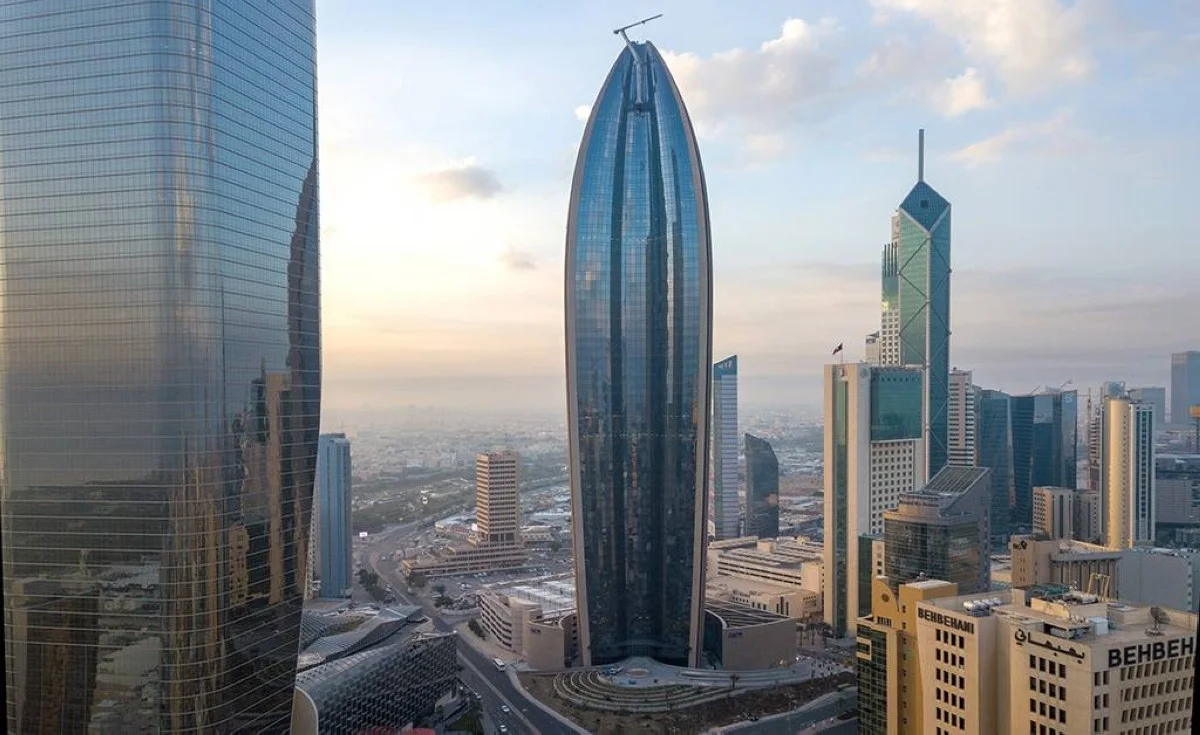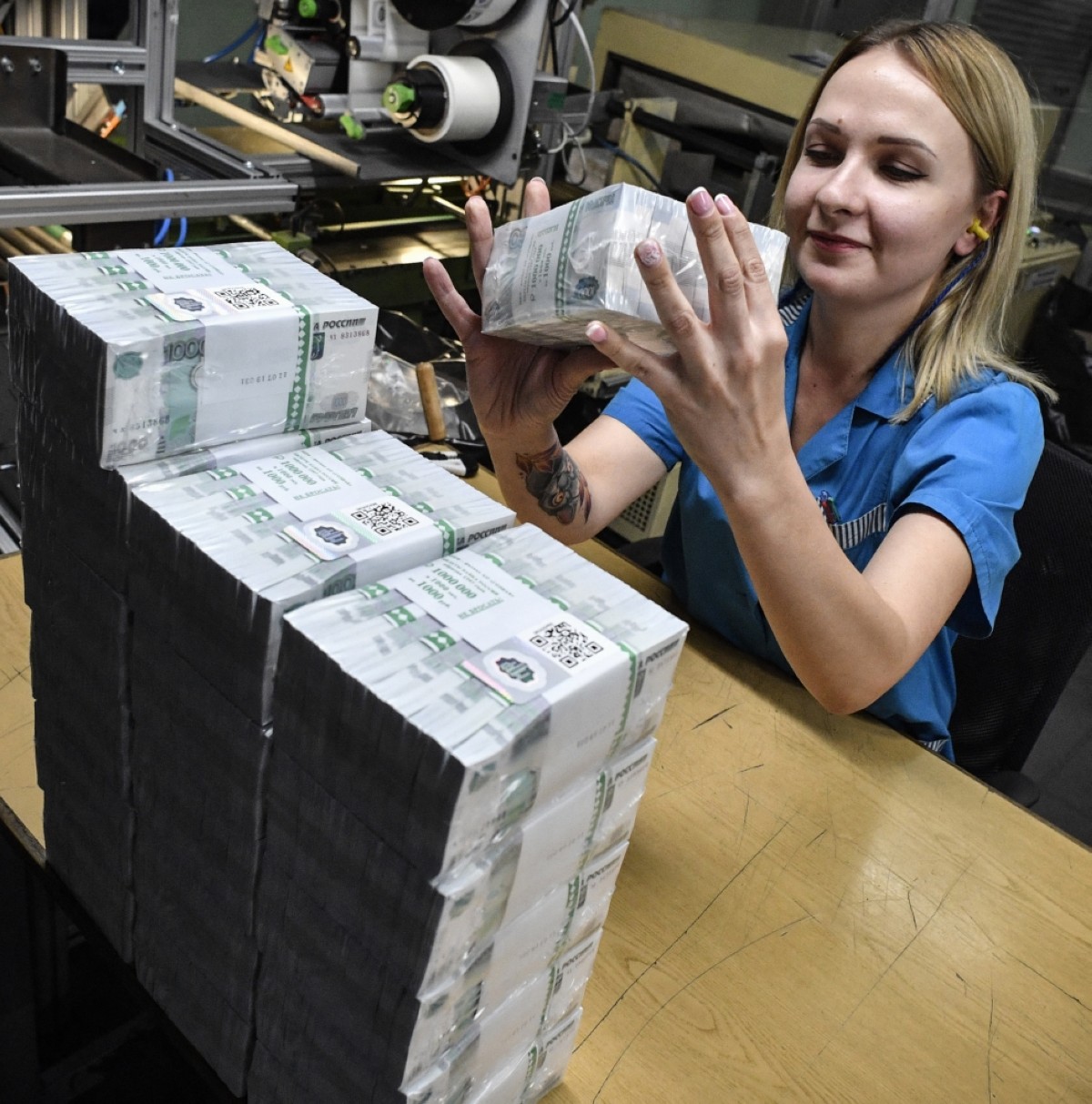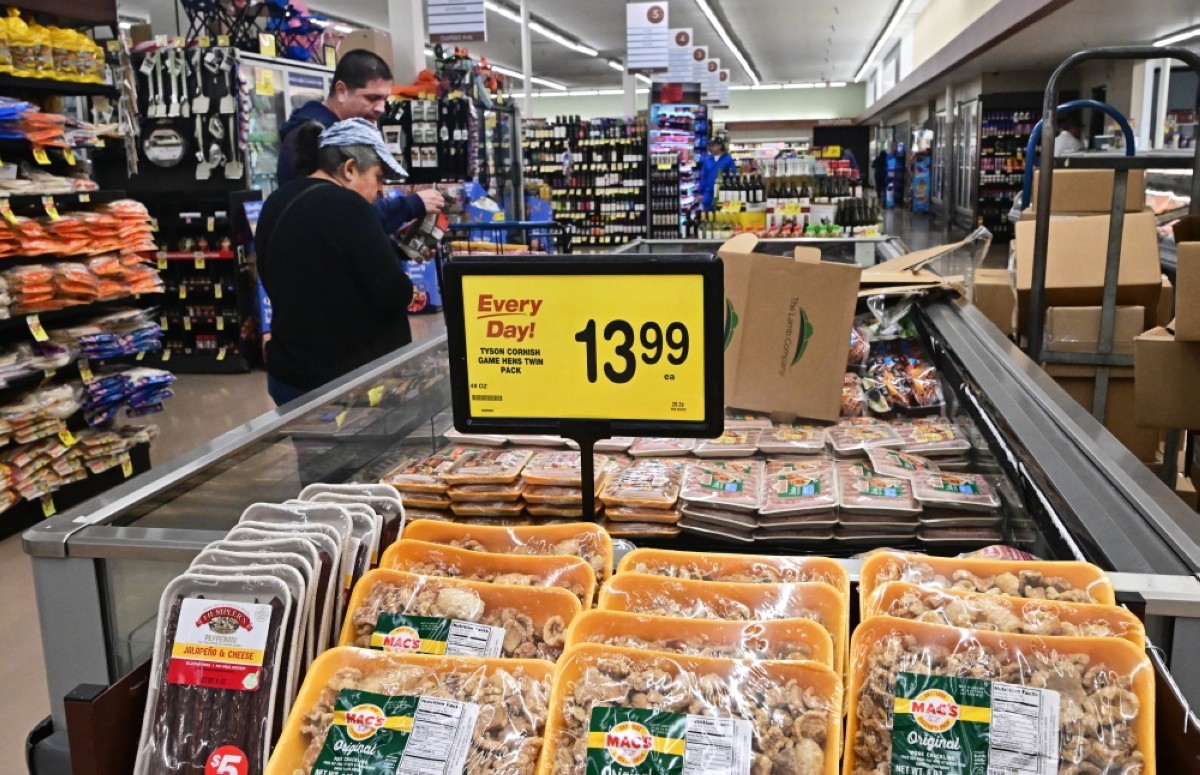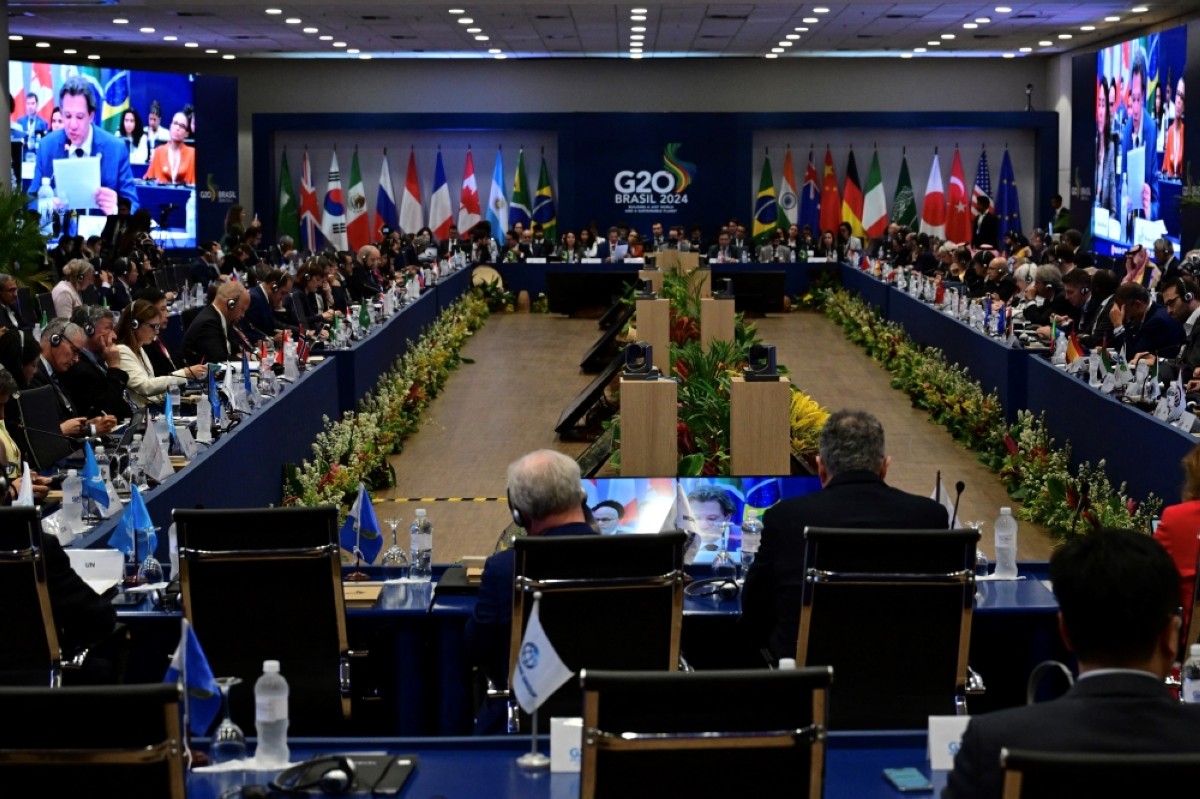Economic data ‘soft’; higher oil prices ease budget pressures
KUWAIT: Data on Kuwait’s economy remained relatively soft in Q1 2024, following a muted 2023.

NBK Economic Report
Both real estate sales and project activity dipped, while credit growth stood at multi-year lows. Inflation also eased, albeit modestly, pointing to cooling private demand. Some of this softness may have been linked to seasonal factors, including the holy month of Ramadan, which fell mostly in March, perhaps auguring for a better Q2.
On the positive side, oil’s recent rise to over $90/bbl (above our estimates of the breakeven oil price for the government’s budget) has boosted the public finances and perhaps overall confidence as well, though the government still ran a significant fiscal deficit in the first 10M of FY23/24 on elevated and difficult-to-rein in spending. Q1 was also characterized by fresh domestic political volatility, with HH the Amir dissolving parliament for the 4th time in 4 years and elections called for early April. The poll ultimately resulted in the return of most of the previous MPs, pointing to no obvious shift in the political deadlock that has delayed key economic reforms until now.
Non-oil activity accelerated
According to data published by the Central Statistical Bureau (CSB), non-oil GDP rose by 2.8 percent y/y in Q3 2023 while the oil sector declined for the second consecutive quarter, by a steep 9 percent y/y, due to Kuwait’s OPEC+ production cut obligations. The pick-up in non-oil growth came from gains in the financial services (+2.7 percent y/y), public administration (+1.0 percent) and transportation & storage (+28 percent) categories, with the latter contributing almost half of the increase in non-oil activity.
However, manufacturing activity, which includes oil refining and accounts for almost 16 percent of non-oil GDP in real terms, remained in negative growth territory (-1.3 percent y/y) for the sixth quarter in a row. Moreover, the CSB release included revisions for the previous quarter (Q2 2023), which saw growth shift from 1.5 percent y/y to -2.5 percent.
Non-oil growth for Q1-Q3 2023 averaged 0.1 percent y/y and, in the absence of further data revisions or especially robust growth in the final quarter, decent growth for the full-year looks unattainable. Although an improvement in growth is expected for 2024, given the soft start to the year across a range of non-oil metrics mentioned above, as well as ongoing domestic and international headwinds, we expect growth to remain on the soft side at 2.5 percent or less.
Oil prices rise in Q1
Oil prices surged in Q1 2024, with Kuwait Export Crude (KEC) rising 8.5 percent q/q to end March at $86.3/bbl. The rally reflected tightening oil market fundamentals following the implementation—and later extension—of OPEC+ supply cuts (2.1 mb/d) to end-H1 2024. This was also allied to stronger-than-expected oil demand growth, with the global economy proving surprisingly resilient amid elevated interest rates and fears of entrenched inflation across the US and EU and higher geopolitical risk premia linked to the Zionist-Iran tensions. We have raised our 2024 oil price forecast to $85/bbl reflect the above dynamics.
Meanwhile, Kuwait’s crude production in Q1 was broadly in line with its OPEC quota of 2.41 mb/d. OPEC+ will meet in June to assess the state of the market and decide on any potential unwinding of the supply cuts. Our base case sees these cuts extended to end-2024, though if oil trades consistently in the $95-$100 range in H2 2024, there might be pressure from both outside and inside OPEC+ to loosen the market a little.
Consumer spending, the pre-eminent driver of non-oil activity post-pandemic, has slowed sharply, albeit from exceptional levels. According to central bank cards data, total card spending grew by 5.4 percent y/y in Q4 2023, down from 8.7 percent in Q3 2023. Looking ahead to 2024, we expect only limited upside amid a challenging local and international macroeconomic environment, which includes elevated interest rates and some budgeted cuts in government spending. That said, the recent increase in oil prices, if sustained, could provide a boost to consumer confidence.
After showing improvement in Q4 2023, real estate sales weakened in the first three months of 2024, falling to a cumulative KD 697 million (-9.5 percent q/q; -2.3 percent y/y) by the quarter’s close. The quarterly fall reflected reduced activity in the commercial property sector, while sales in both the residential and investment sectors increased only slightly, the latter for the third consecutive quarter. Seasonality, with the holy month of Ramadan falling in March, may have played a part in Q1—transaction volumes were down on Q4 2023—though if so, the effect appears to have been limited to the commercial sector, where bigger ticket, more complex sale executions are the norm.
Looking ahead, while it is noteworthy that the rate of annual decline in real estate sales had slowed to -2.3 percent y/y in Q1 from its lowest point of -38 precent in Q2 2023, we still expect any improvement this year to be modest given elevated interest rates, relatively subdued sentiment and an uncertain macroeconomic backdrop.
Project activity dips in Q1
Following a much-improved 2023, the value of awarded projects in Q1 2024 declined significantly to KD 98 million (-78 percent q/q: -80 percent y/y), with only a handful of mainly infrastructure-related projects (eg the Al-Mutlaa and Sabah Al-Ahmad cities) seeing any movement. The Q1 figure was the lowest in two decades, although as with real estate sales above, it could be partly explained by seasonal effects, including Ramadan. The outlook for the rest of 2024 should be better given positive signals emanating from the Al-Zour IWPP phases 2&3 project (KD 1.2 billion) and the pipeline of PAHW-related city projects. MEED estimates total awards could reach KD 6.3 billion in 2024.
Consumer price inflation came in at 3.4 percent y/y in February, ticking up slightly from January but down on the 3.7 percent average recorded in Q4 2023. Core inflation, which strips out food and housing, stood at 3.3 percent y/y in February, not far off its 2023 peak of 3.5 percent recorded last November. Although not high, price pressures have been somewhat persistent across the CPI basket, easing only gradually. Food price inflation has now risen for two months in a row to 5.0 percent in February. We think inflation this year will trend downwards to an average of around 3.0 percent or slightly below, in line with expectations of still muted economic activity.
According to the Public Authority of Civil Information (PACI), Kuwait’s population rose by 2.6 percent in 2023 to 4.86 million (+8 percent in 2022). The population of Kuwaiti nationals increased by a steady 1.9 percent to 1.55 million, while the number of expatriates rose by 2.9 percent to 3.31 million (much slower than the 11.1 percent recorded in 2022), just below the peak level, pre-pandemic.
Meanwhile, the number of Kuwaitis in employment rose in 2023 by 3.3 percent to 470K. Gains (net) were exclusively on account of public sector hiring (+17K new jobs), as Kuwaiti employment in the private sector continued to decline, with 1.8k jobs shed to 72.6k. Expatriate jobs, on the other hand, rose by 5.4 percent y/y, led by domestic workers (+6.6 percent). Should project activity gain more momentum in 2024, then it is reasonable to expect this number to increase. The boost to private consumption may be less pronounced, however, given that most new hires would likely be in the low-end wage category. The resumption of family visa issuance could also work to augment the number of expatriates.
Fiscal balance
Ministry of Finance data for 10M FY23/24 (April-January) showed the government posting a fiscal deficit of KD 1.1 billion (-2.6 percent of estimated GDP) on revenues of KD 17.8 billion (-24 percent y/y) and expenditures of KD 18.9 billion (+61 percent y/y). The 10-month figure is in stark contrast to last year’s equivalent period reading, when the public finances were in surplus (KD 10.2 billion; +18.5 percent of GDP) amid spiking international oil prices. Nevertheless, the fiscal deficit is narrower than the KD 1.7 billion posted in the 9-month accounts published a month earlier, an improvement that reflects revenue growth outpacing expenditure growth. Oil revenues stood at KD 16.4 billion (-25 percent y/y) and non-oil revenues KD 1.4 billion (+8.4 percent y/y).
On the expenditure side, current expenditures came in at KD 16.6 billion (+66 percent y/y) on higher outlays in the compensation of employees and grants categories. Meanwhile, capex reached KD 821 million, declining 15.6 percent y/y. As a proportion of the capex budget allocation, 55 percent remained unspent by January’s close. Based on historical spending patterns, the deficit could widen to more than KD 3 billion (6 percent of GDP) in FY23/24.
The draft budget for FY24/25 projects another sizeable deficit of KD 5.9 billion and still reflects long-standing structural challenges, namely the high reliance on oil revenues and inflated current spending, which continue to undermine long-term sustainability. Recently, Fitch rating agency affirmed Kuwait’s sovereign credit rating at a high AA- with a stable outlook on a strong fiscal balance sheet (financial assets at 529 percent of GDP in FY24/25) while noting the ever-expanding welfare state coupled with lack of traction on economic reforms.
Credit growth picks up
After a weak 2023, credit growth showed some improvement in Jan-Feb 2024, though remained historically weak in year-on-year terms. According to the latest CBK release, credit increased by a strong 0.7 percent m/m in February (+1.8 percent y/y; +0.5 percent ytd) on the back of higher household (+0.2 percent m/m; +1.9 percent y/y) and business lending (+0.5 percent m/m; +0.7 percent y/y).
In the former, so far in 2024 growth in consumer loans (+1.1 percent ytd) outpaced housing loan growth (+0.3 percent ytd), a reversal of the trend in 2022-2023. Business lending, meanwhile, has been broad-based across sectors, with the construction sector posting the quickest growth after two months (+5.6 percent ytd), in line with its performance in 2022-2023.
Meanwhile, after a weak January, resident deposits increased by a solid 1 percent m/m in February (+3.7 percent y/y; +0.7 percent ytd), with all three sub-components (private sector, public institutions, and government) rising. Private sector deposits, after a flat January, increased by 0.8 percent m/m (+0.3 percent y/y), and while private sector CASA increased by 0.6 percent m/m, it was outstripped by 1.4 percent growth in private sector time deposits.
The US Fed has likely ended its rate hiking cycle, and the attention has shifted to the timing and extent of rate cuts in 2024. The most recent Fed projections (March 2024) continued to indicate three 25bps rate cuts in 2024. Futures markets have toned down their expectations from the previous five or six cuts to perhaps only two.
Equities rallied in Q1 2024
The Kuwait All-Share Index recovered from its quarterly decline in Q4 2023 (-1 percent q/q) with a strong gain of 7.5 percent q/q in Q1 2024, helped by seasonal factors (earnings season), firming oil prices, fairly resilient global economic data and more positive investor sentiment regarding rate cut prospects in 2024. March did see, however, a modest retreat in the All-Share Index, likely due to Ramadan (-1.5 percent m/m). Liquidity also recovered in Q1, with monthly turnover at KD 1.2 billion compared to KD 956 million in Q4 2023.











